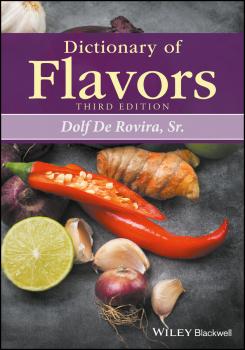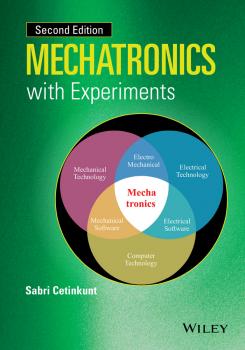Техническая литература
Различные книги в жанре Техническая литератураDictionary of Flavors
The third edition of this highly popular scientific reference continues to provide a unique approach to flavors, flavor chemistry and natural products. Dictionary of Flavors features entries on all flavor ingredients granted G.R.A.S. status, compounds used in the formulation of food flavors, and related food science and technology terms. Allergies and intolerances are addressed, along with strategies to avoid allergenic compounds. This latest edition has been fully updated to reflect new ingredients available on the market, as well as developments in safety standards and the international regulatory arena. Dolf De Rovira applies his extensive experience to make this the most comprehensive guide to flavors available.
Plastics Product Design
This book is aimed at designers who have had limited or no experience with plastics materials as well as a more experienced designer who is designing a part for a use, process or an application that they are not familiar with. The reader is provided with an introduction to plastics as a design material and a discussion of materials commonly in use today. There is a discussion of a variety of processes available to the designer to make a part along with the design considerations each process will entail. This section also includes a discussion of useful prototyping processes, including advantages and disadvantages of each. Next, the book will discuss general design considerations applicable to most plastics product designs. In section 2 of the book the author will discuss elements of design of a number of generic plastic product types based on his 40+ years of experience of product design and development for a several companies with a variety of products. This section will include discussions of structural components, gears, bearings, hinges, snap fits, packaging, pressure vessels, and optical components. This section will discuss the general considerations that apply to these applications as well as specific incites about each particular application. The book concludes with a discussion of the general design process.
Mechatronics with Experiments
Comprehensively covers the fundamental scientific principles and technologies that are used in the design of modern computer-controlled machines and processes. Covers embedded microcontroller based design of machines Includes MATLAB®/Simulink®-based embedded control software development Considers electrohydraulic motion control systems, with extensive applications in construction equipment industry Discusses electric motion control, servo systems, and coordinated multi-axis automated motion control for factory automation applications Accompanied by a website hosting a solution manual
Advanced Healthcare Materials
Advanced materials are attracting strong interest in the fundamental as well as applied sciences and are being extensively explored for their potential usage in a range of healthcare technological and biological applications. Advanced Healthcare Nanomaterials summarises the current status of knowledge in the fields of advanced materials for functional therapeutics, point-of-care diagnostics, translational materials, up and coming bio-engineering devices. The book highlights the key features which enable engineers to design stimuli-responsive smart nanoparticles, novel biomaterials, nano/micro-devices for diagnosis, therapy (theranostics).The leading contributor researchers cover the following topics: State-of-the-art of biomaterials for human health Micro- and nanoparticles and their application in biosensors The role of immunoassays Stimuli-responsive smart nanoparticles Diagnosis and treatment of cancer Advanced materials for biomedical application and drug delivery Nanoparticles for diagnosis and/or treatment of Alzheimers disease Hierarchical modelling of elastic behavior of human dental tissue Biodegradable porous hydrogels Hydrogels in tissue engineering, drug delivery and wound care Modified natural zeolites Supramolecular hydrogels based on cyclodextrin poly(pseudo)rotaxane Polyhydroxyalkanoate-based biomaterials Biomimetic molecularly imprinted polymers The book is written for readers from diverse backgrounds across chemistry, physics, materials science and engineering, medical science, pharmacy, biotechnology, and biomedical engineering. It offers a comprehensive view of cutting-edge research on advanced materials for healthcare technology and applications.
Electrical Estimating Methods
Simplify the estimating process with the latest data, materials, and practices Electrical Estimating Methods, Fourth Edition is a comprehensive guide to estimating electrical costs, with data provided by leading construction database RS Means. The book covers the materials and processes encountered by the modern contractor, and provides all the information professionals need to make the most precise estimate. The fourth edition has been updated to reflect the changing materials, techniques, and practices in the field, and provides the most recent Means cost data available. The complexity of electrical systems can make accurate estimation difficult, but this guide contains all the necessary information in one place. An electrical estimate represents the total cost for materials, labor, overhead and profit, but accuracy is virtually impossible without a basic knowledge of the field, and real-world experience in the type of work required. Inaccurate estimates lead to problems with customer satisfaction, which often create payment issues. A thorough, complete, and accurate estimate is in the best interest of all parties involved in the work. Electrical Estimating Methods provides more than just data. Detailed discussions about the work itself help highlight factors that may escape notice, and access to the latest cost data helps tie everything together. Features include: Discussion of current equipment, materials, and processes Means data for both residential and commercial projects Case studies that illustrate best practices Online access to the latest Means data for fast access on the job The book discusses specific situations as well as general practices, and provides comprehensive guidance to the creation of a true, current, estimation of costs. For electrical contractors and estimators, Electrical Estimating Methods contains must-have content that simplifies the estimating process.
Gas Insulated Substations
Comprehensive reference covering all aspects of gas insulated substations including basic principles, technology, use & application, design, specification, testing and ownership issues This book provides an overview on the particular development steps of gas insulated high-voltage switchgear, and is based on the information given with the editor’s tutorial. The theory is kept low only as much as it is needed to understand gas insulated technology, with the main focus of the book being on delivering practical application knowledge. It discusses some introductory and advanced aspects in the meaning of applications. The start of the book presents the theory of Gas Insulated Technology, and outlines reliability, design, safety, grounding and bonding, and factors for choosing GIS. The third chapter presents the technology, covering the following in detail: manufacturing, specification, instrument transformers, Gas Insulated Bus, and the assembly process. Next, the book goes into control and monitoring, which covers local control cabinet, bay controller, control schemes, and digital communication. Testing is explained in the middle of the book before installation and energization. Importantly, operation and maintenance is discussed. This chapter includes information on repair, extensions, retrofit or upgrade, and overloading. Finally applications are covered along with concepts of layout, typical layouts, mixed technology substations, and then other topics such as life cycle assessment, environmental impact, and project management. A one-stop, complete reference text on gas insulated substations (GIS), large-capacity and long-distance electricity transmission, which are of increasing importance in the power industry today Details advanced and basic material, accessible for both existing GIS users and those planning to adopt the technology Discusses both the practical and theoretical aspects of GIS Written by acknowledged GIS experts who have been involved in the development of the technology from the start
Color Appearance Models
The essential resource for readers needing to understand visual perception and for those trying to produce, reproduce and measure color appearance in various applications such as imaging, entertainment, materials, design, architecture and lighting. This book builds upon the success of previous editions, and will continue to serve the needs of those professionals working in the field to solve practical problems or looking for background for on-going research projects. It would also act as a good course text for senior undergraduates and postgraduates studying color science. The 3rd Edition of Color Appearance Models contains numerous new and expanded sections providing an updated review of color appearance and includes many of the most widely used models to date, ensuring its continued success as the comprehensive resource on color appearance models. Key features: Presents the fundamental concepts and phenomena of color appearance (what objects look like in typical viewing situations) and practical techniques to measure, model and predict those appearances. Includes the clear explanation of fundamental concepts that makes the implementation of mathematical models very easy to understand. Explains many different types of models, and offers a clear context for the models, their use, and future directions in the field.
Introduction to Sustainability
Introduction to Sustainability is the first major textbook to review major themes in the cutting-edge field of sustainability. The book is suitable for introductory interdisciplinary courses on sustainability, as well as those in the fields of geography, geology, sociology, planning, political science, and anthropology. Brinkmann’s book allows students to see the world in new ways while also encouraging them to become part of the change needed to ensure the long-term sustainability of the planet. The text includes material on the development of the field of sustainability; environmental sustainability issues like water, food, and energy; social sustainability themes like environmental justice and transportation; and economic sustainability topics like green businesses and economic development. The book concludes with a chapter on sustainability issues in college and universities. Brinkmann intersperses many fascinating case studies and text boxes that encourage students to deeply explore the material. This is a book that not only organizes the complex field of sustainability, but also encourages students to take action to make the world a better place.
Food Science and Technology
Food Science and Technology, Second Edition is a comprehensive text and reference book designed to cover all the essential elements of food science and technology, including all core aspects of major food science and technology degree programs being taught worldwide. The book is supported by the International Union of Food Science and Technology and comprises 21 chapters, carefully written in a user-friendly style by 30 eminent industry experts, teachers, and researchers from across the world. All authors are recognized experts in their respective fields, and together represent some of the world’s leading universities and international food science and technology organizations. All chapters in this second edition have been fully revised and updated to include all-new examples and pedagogical features (including discussion questions, seminar tasks, web links, and glossary terms). The book is designed with more color to help enhance the content on each page and includes more photos and illustrations to bring the topics to life. Coverage of all the core modules of food science and technology degree programs internationally Crucial information for professionals in the food industry worldwide Chapters written by subject experts, all of whom are internationally respected in their fields A must-have textbook for libraries in universities, food science and technology research institutes, and food companies globally Additional interactive resources on the book's companion website, including multiple choice questions, web links, further reading, and exercises Food Science and Technology, 2nd Edition is an indispensable guide for food science and technology degree programs at the undergraduate and postgraduate level and for university libraries and food research facilities.
Structural Design of Buildings
Covering common problems, likely failures and their remedies, this is an essential on-site guide to the behaviour of a building’s structure. Presented in a clear structure and user-friendly style, the book goes through all the structural aspects of a building and assesses the importance of the different components. It explains the structural behaviour of buildings, giving some of the basics of structures together with plenty of real-life examples and guidance.









